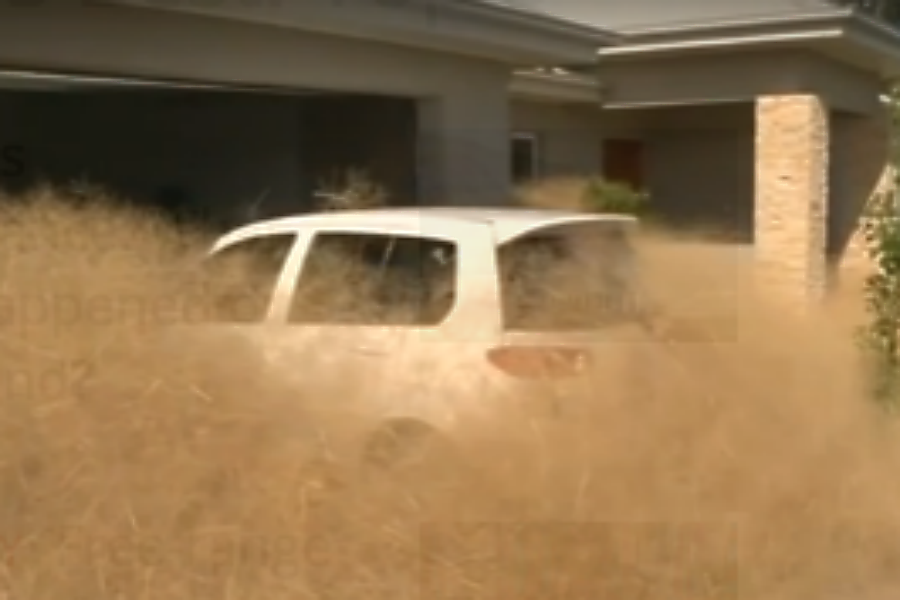Aussie town battles tumbleweed invasion: A climate change signal?
Loading...
Hairy panic, a perennial weed native to inland Australia, has taken over the rural city of Wangaratta in northern Victoria.
“Walked out the front door this morning to find a good six-metre [19-foot] spread of tumbleweed across the front of the house – again,” Wangaratta local Jason Pera tells Australia Broadcasting Corporation (ABC) Thursday. “It makes it difficult to get the car out in the morning – if you can find it.”
Images and videos of panicum effusum, adequately nicknamed hairy panic, overtaking the 17,000-person city have spread across the world. The weed is piling up on lawns and sidewalks, sometimes reaching roof height. To reach their doors, some homeowners have resorted to leaf-blowers.
Hairy panic poses no threat to humans or pets, and the County Fire Authority has said the weed’s fire risk is “relatively low.” The only possible danger of hairy panic threatens farm animals such as sheep and pigs, which can develop "yellow big-head" or blistering of light-colored areas, if they eat large quantities of the weed.
The hairy panic blankets Wangaratta every year, but residents say this summer has been worse than ever due to the extremely dry conditions.
“Since the mid-1990s, southeast Australia has experienced a 15 percent decline in the late autumn and early winter rainfall and a 25 percent decline in average rainfall in April and May,” explains Climate Council, an independent Australian organization, in a 2015 report. “Climate change is driving an increase in the intensity and frequency of hot days and heatwaves in Australia, in turn increasing the severity of droughts.”
Australia is the driest inhabited continent on Earth, so Australians are used to living with drought.
But the warming climate has redirected rainfall from Southern Ocean fronts farther southward, leaving the heavily populated region of southern Australia high and dry. And if greenhouse gas emissions are not cut “deeply and rapidly,” droughts in southern Australia – where Wangaratta is located – will become longer and more severe, say climate scientists.
There is not much the weed-infested city can do “from an enforcement side of things, through local laws,” a council spokesman tells Guardian Australia. “The council has a very limited capacity to intervene, but we are attempting to work with residents and nearby farmers.” Most important, adds the spokesman, the council is researching potential control measures for the years to come.
But Thursday’s giant tumbleweed comes a week after Australia’s main scientific research agency announced deep cuts to its climate change programs. Larry Marshall, head of the Commonwealth Scientific and Industrial Research Organisation (CSIRO), announced that 350 employees will be removed from national climate change research and redirected toward industry and commercial initiatives.
“Hundreds of scientists around the world have protested that [the] strategy misses the point: in order to find intelligent solutions to climate change, precise research about it is needed – research that has been carried out in the teams most impacted by CSIRO’s cuts,” The Christian Science Monitor’s Molly Jackson explained last week.
Especially considering “Australia is ground zero for climate change,” a CSIRO scientist told ClimateWire. Australia needs climate models, adds the scientist, because the country will be forced to adapt to hotter, drier conditions.
Climate-induced drought is a serious issue for Wangaratta residents, but when it comes to the hairy panic, they are trying to keep a sense of humor.
“We are looking at ways to capitalize on this stuff,” Mr. Pera tells ABC. “Whether we go into production of scarecrows or raise some money and get some goats in to eat this stuff away.”








